Feature: Welfare Vehicle Donation Program
Addressing Welfare Transportation Needs for 27 Years
With the unprecedented aging of society, the need for transportation services for people who require in-home nursing care is increasing. On its 60th anniversary in 1985, Chugai acted on the advice of concerned organizations and groups by initiating a program to donate specially equipped welfare vehicles to groups throughout Japan that provide home welfare services to the elderly and disabled. Originally, it was envisioned as a five-year program. However, we decided to continue it after realizing the strong need among welfare service providers not only to provide necessary services, but also to help free beneficiaries from the confines of their homes and contribute to raising their quality of life by deepening their involvement with their communities.
Every year since 1985, we have donated one vehicle to each of five welfare organizations selected in cooperation with the Japan National Council of Social Welfare and Central Community Chest of Japan. In 2005, Chugai’s 80th anniversary, we donated a total of 47 vehicles, one per organization selected by each of Japan’s prefectures. In the 27 years through 2011, we have donated a total of 188 welfare vehicles.
In 2011, we donated vehicles to five social welfare councils, including the Okumamachi Council of Social Welfare in Fukushima Prefecture, which had to temporarily relocate to Aizuwakamatsu City due to the nuclear power plant accident caused by the Great East Japan Earthquake.
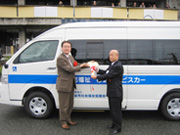
Kyotango City Council of Social Welfare presentation ceremony
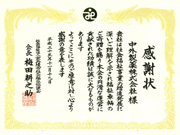
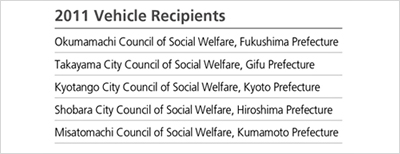
Welfare Vehicles That Offer Functionality and Safety from the Standpoint of Caregivers and Users
The welfare vehicles that Chugai donates are vans with a front-seat capacity of three passengers, including the driver, and a rear-seat capacity of four wheelchair passengers or two wheelchair passengers and a gurney. The vehicles are equipped with automated wheelchair lifts as well as interior handrails to ensure user safety and reduce the burden on caregivers when boarding and exiting. Moreover, Chugai has the vehicles customized for functionality and safety with features such as a navigation system that allows the driver to check for objects behind the vehicle when backing up.

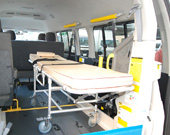
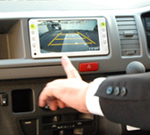
Comment from a Recipient Selection Organization


The Japan National Council of Social Welfare was established as the national organization of prefectural social welfare councils, but there are also municipal welfare councils in all cities, towns and villages (about 1,800). We select recipients of the welfare vehicles through a fair and open process based on requests submitted to prefectural social welfare councils from around the country. We have assisted in this program since it began almost 30 years ago, but we feel that the need for these vehicles will increase in regions with aging populations and declining birthrates and in regions that have expanded due to municipal mergers. Continuing this program is very important for the social participation of the elderly and disabled. I really hope that Chugai will continue this meaningful support indefinitely.
Kenji Yamazaki, Secretary
Elderly and Disabled Welfare Dept.
Japan National Council of Social Welfare
Comment from a Recipient Facility
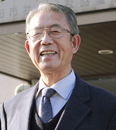

We received a welfare vehicle from Chugai six years ago, in 2005. At our facility, we loan it to members on request. Since there is a large hospital nearby, it is often used for shopping trips or other excursions by people who are hospitalized or attending the attached training center. Users have told us that looking at the town through the vehicle window and having contact with the community gives them joy and something to live for. I am sincerely grateful for this vehicle.
Masaharu Sato, Chairman
Hasuda City Council of Social Welfare
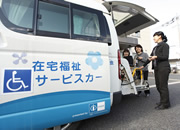
Comment from the Head of the Program


This donation program has been able to go on for 27 years because it is a solution to a social issue. Another major factor is that the Japan National Council of Social Welfare and Central Community Chest of Japan, which work in cooperation with Chugai, help to ensure the program’s neutrality and transparency. In a way, this steadiness and continuity characterizes Chugai. I think the significance of this program will continue to grow because the number of people who require nursing care is expected to increase further with the aging of society and other trends. Maintaining some form of connection with the communities where we donate the vehicles should widen the range of activities we can engage in.
Hideo Oka
Social Contribution Group,
Corporate Social Responsibility Dept.
